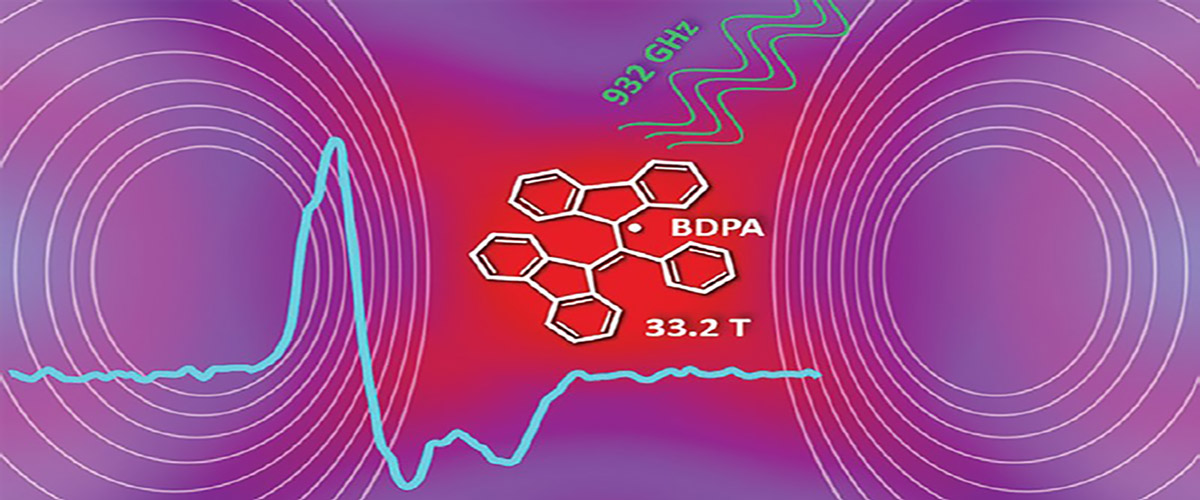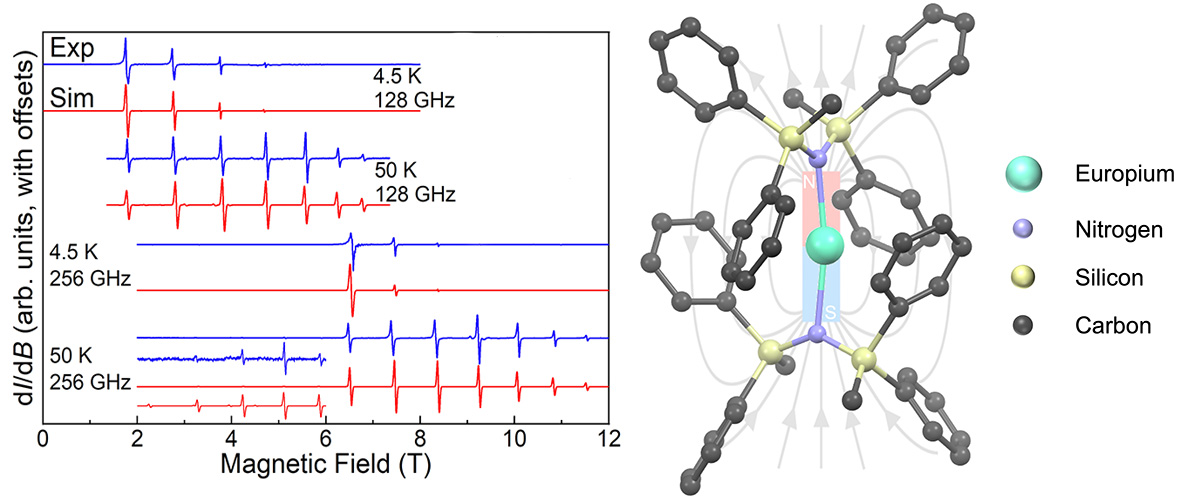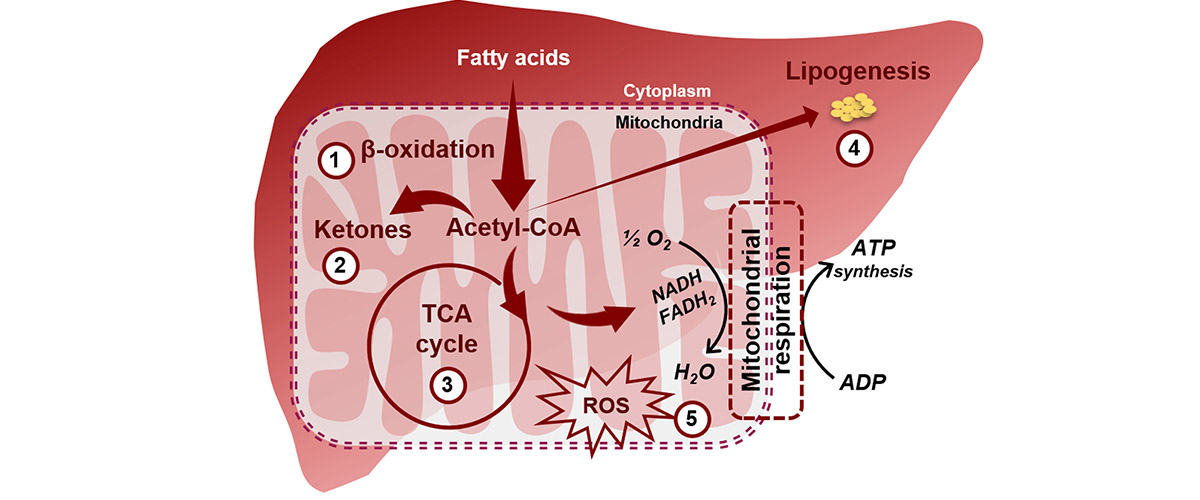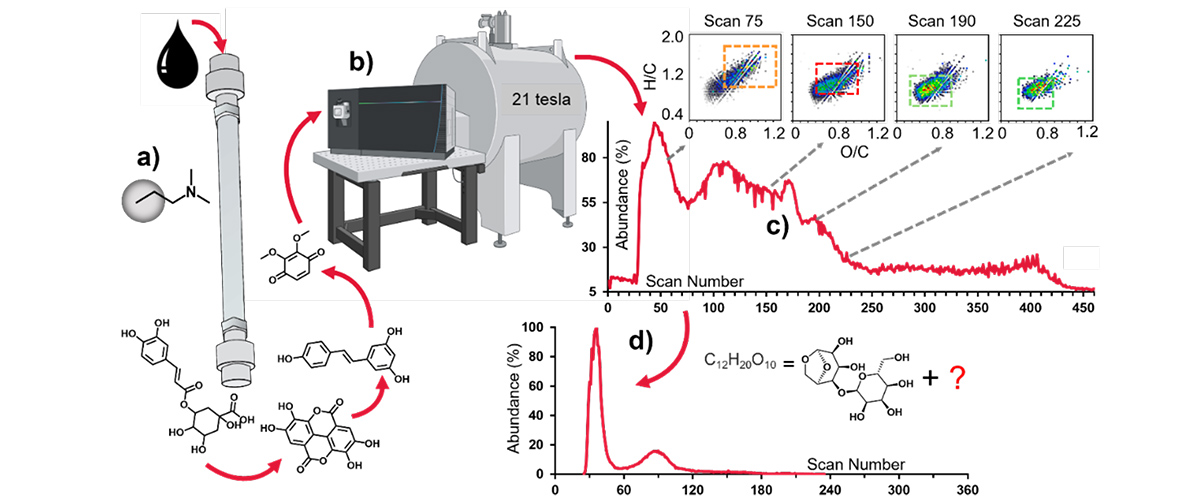What did scientists discover?
MagLab scientists have developed new instrumentation for performing electron paramagnetic resonance (EPR) experiments in the MagLab’s flagship 36T series-connected hybrid (SCH) magnet. Measurements were performed by a user collaboration on two compounds containing the rare-earth element gadolinium, revealing exceptionally high-resolution EPR spectra at the highest magnetic fields.
Why is this important?
The gadolinium compounds under investigation are of interest as magnetic tags that can be attached to large biological molecules such as proteins, so that EPR measurements can then be used to study their structure and function, providing details on length- and frequency-scales that exceed those obtainable by nuclear magnetic resonance (NMR). The exceptionally high-resolution spectra obtained in this investigation demonstrate the potential utility of gadolinium tags for deployment in biomolecular EPR studies at very high magnetic fields.
Who did the research?
T. Dubroca1, X. Wang1,2, F. Mentink-Vigier1, B. Trociewitz1, M. Starck3, D. Parker3, S. Hill1,4, J. Krzystek1, M.S. Sherwin5
1National MagLab FSU; 2Cal State University East Bay Chemistry; 3University of Durham Chemistry, UK; 4FSU Physics; 5UCSB Physics
Why did they need the MagLab?
The 36T SCH is the only magnet in the world that is capable of providing the high-resolution EPR results obtained in this study. First of all, in order to resolve features in the spectra that span just 1/1000th of a tesla [1 millitesla (mT)], the magnet itself must be able to generate magnetic fields that are both temporally stable and uniform over the volume (~1cm3) of the sample, with variations of less than 1mT. While the MagLab supports other magnets that can generate 36T, only the SCH possesses the required stability and uniformity. In addition, one of the studied gadolinium compounds shows a pronounced increase in spectral resolution upon increasing the magnetic field. Consequently, realization of the optimum resolution is only possible at the highest magnetic fields, for which the new state-of-the-art is the 36T achievable in the SCH.
Details for scientists
- View or download the expert-level Science Highlight, Terahertz EPR Spectroscopy in the High-Homogeneity 36T Series-Connected Hybrid Magnet
- Read the full-length publication, Terahertz EPR spectroscopy using a 36-tesla high-homogeneity series-connected hybrid magnet, in Journal of Magnetic Resonance
Funding
This research was funded by the following grants: G.S. Boebinger (NSF DMR-2128556); S. Hill (NSF CHE-2203405); M.S. Sherwin (NSF MCB-2028560)
For more information, contact Stephen Hill.






